Books
Books
published in 2009
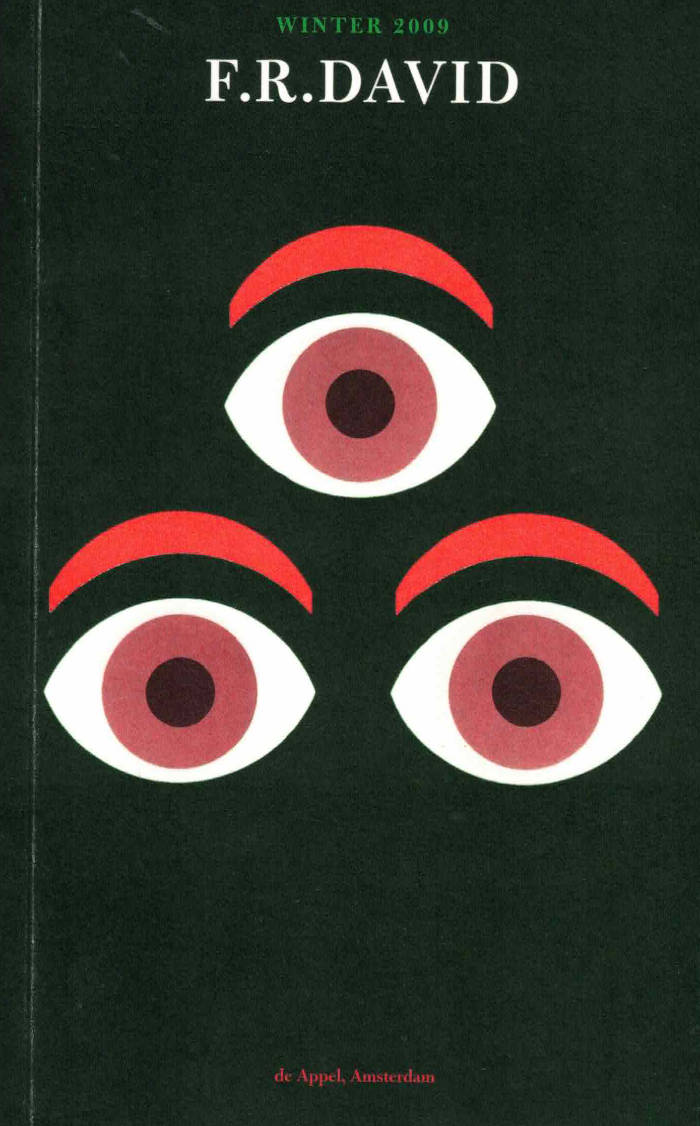
F.R. David - Iditorial
“The bizarre order in which the seven days of the week appear in the current issue of F.R.DAVID is modelled after the sequence of KarlHeinz Stockhausen’s opera cycle 'Licht', starting with “Donnerstag am Licht” (work on which began in 1977) and ending with “Sonntag am Licht”, the part with which the composer finally concluded the series in 2003. In Stockhausen’s cycle, the subject matter of each opera mirrors (however opaquely at times) the traditional mythological attributes ascribed to the various days of the week—not a concern that exerted any influence on F.R.DAVID’s appropriation of this structure, which is no more than a homage in passing. Each editorial was conceived and written, however, within the space of a day, with various elements recurring, echo-like, throughout the week that was. So far, 'Licht' has never been staged in its entirety, and it is not known whether Stockhausen ever meant it to be.”
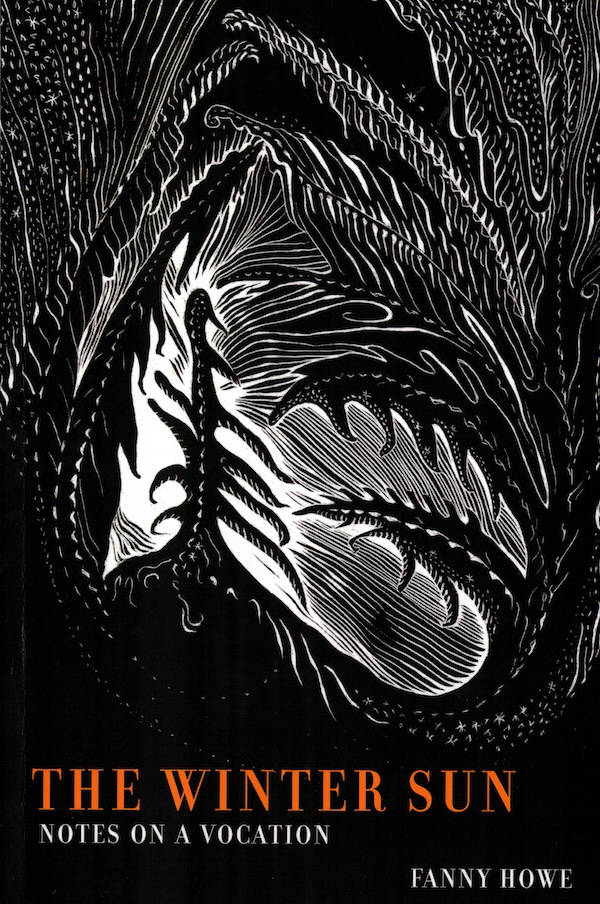
The Winter Sun
Fanny Howe's richly contemplative The Winter Sun is a collection of essays on childhood, language, and meaning by one of America's most original contemporary poets.
Through a collage of reflections on people, places, and times that have been part of her life, Howe shows the origins and requirements of "a vocation that has no name." She finds proof of this in the lives of others—Jacques Lusseyran, who, though blind, wrote about his inner vision, surviving inside a concentration camp during World War II; the Scottish nun Sara Grant and Abbé Dubois, both of whom lived extensively in India where their vocation led them; the English novelists Antonia White and Emily Brontë; and the fifth-century philosopher and poet Bharthari. With interludes referring to her own place and situation, Howe makes this book into a Progress rather than a memoir.
The Winter Sun displays the same power as found in her highly praised collection of essays, The Wedding Dress, a book described by James Carroll as an "unflinching but exhilarating look at real religion, the American desolation, a woman's life, and, always, the redemption of literature."
Fanny Howe is the author of more than twenty books of poetry and prose. She has won a fellowship from the Guggenheim Foundation and an award from the Academy of Arts and Letters.

What Did I Do Wrong?
Episodic and picaresque, Fanny Howe's novella What Did I Do Wrong? tells the story of a revolutionary mutt's journey through the kennels, parks, and suburban waste spaces around Boston in search of true freedom. This dog offers a firsthand account of the cruelty meted out to both animals and forgotten members of human society. Like The Golden Ass, What Did I Do Wrong? takes on moral and spiritual questions without abandoning earthly appetites. In a twist on the fabulous tradition established by Apuleius, we are urged not to maintain our humanity but rather to look for the dog within.
Illustrated by Colleen McCallion.

Century of Clouds
This edition restores to print a central text of the New Narrative movement, founded in San Francisco by Boone and Robert Gluck in response to the stagnation of contemporary experimental poetry of the late 1970s. Wishing to bring the vigor and energy of the gay rights and feminist movements, Bruce Boone’s writing of the late 1970s is as fresh, funny, witty, and self-reflexive as it was thirty years ago. First published in 1980, Century of Clouds, based on Boone’s experiences at the summer meeting of Marxism and Theory Group in St. Cloud, Minnesota, takes up issues of sexuality, political and theoretical identity, religion, and friendship in the characteristically rich and varied writing of the New Narrative movement.

Love Belongs to Those Who Do the Feeling: New & Selected Poems (1966-2006)
An exciting collection of new and selected poetry by Judy Grahn. The book contains selections from Judy's entire body of poetic work from The Work of a Common Woman, The Queen of Wands and The Queen of Swords, to new poems written between 1997 and 2008.
Judy's poetry is rangy and provocative. It has been written at the heart of so many of the important social movements of the last forty years that the proper word is foundational.
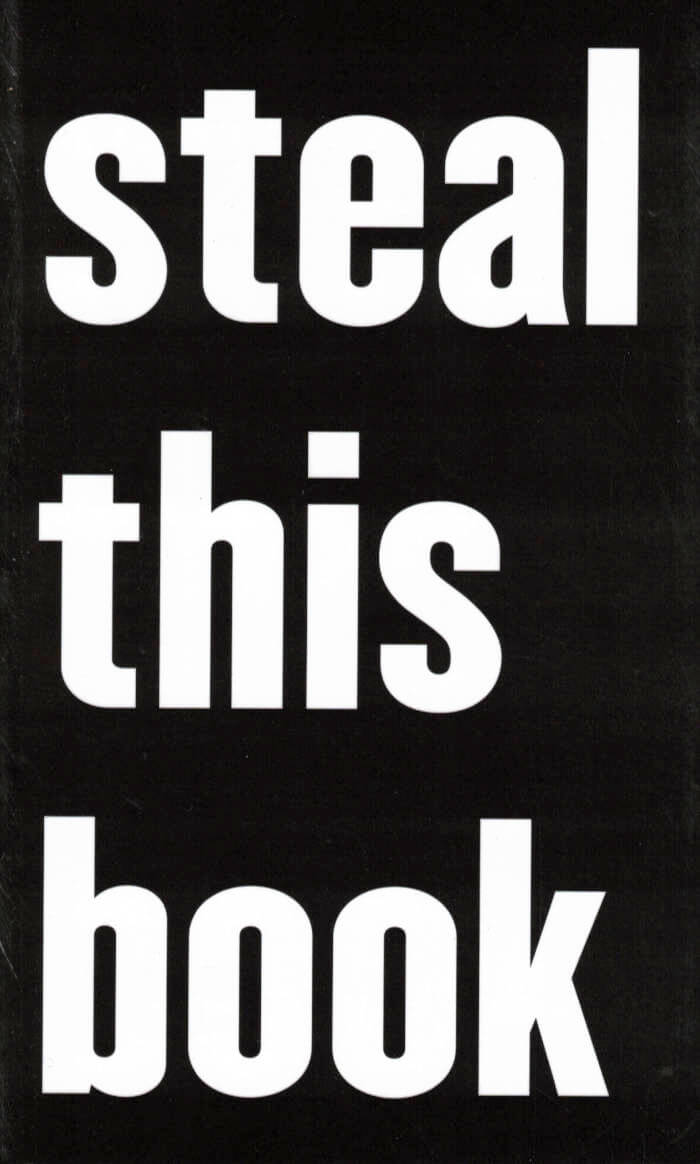
Steal This Book
Eleven performance-based projects by Dora García, documented through letters, emails and other elements from the artist's private correspondence with various interpreters of performances, whether they were direct collaborators of simple spectators.
Edited and prefaced by François Piron, Steal This Book, a tribute to Abbie Hoffmann's pamphlet of the same name, is not a definitive attempt at rendering the pieces on which it is based; it calls for a free, active and contradictory reception, that of an open archive. Part epistolary novel, part rough screenplay and part user's manual, Steal This Book proposes a body of discussions, questions without answers and endless ramblings, in place of the critique's or the artist's voice.
The book has also been presented in exhibitions as a Dora García sculpture meant to be stolen, but it can also be purchased in selected bookstores worldwide.
Contrary to the idea that would have art addressing the greatest possible number of people, Dora García (born in 1965 in Valladolid, lives and works in Barcelona), best known for her performance devices, is interested in what is enacted at the individual scale: in a radically conceptual form, at once accessible and elegant, she elects to transmit oddly coded messages, their ask being to bestir a specific relation with each and every visitor. Dora García is interested in everything that intervenes in the communication between an artist and his/her public: art no longer represents the world, but itself becomes a producer of realities often on the borderline of fiction and make-believe. It urges us to undergo experiences other than ordinary situations, at once simple and hard to grasp.
Dora García has had solo exhibitions at the MACBA in Barcelona, the Reina Sofia in Madrid and the SMAK in Gent. She represented Spain at the Venice Biennale in 2011, and was a part of the Skulptur Projekte Münster 07, the Sydney Biennial in 2009, the Biennale de Lyon in 2009 and Documenta 13 in 2012.
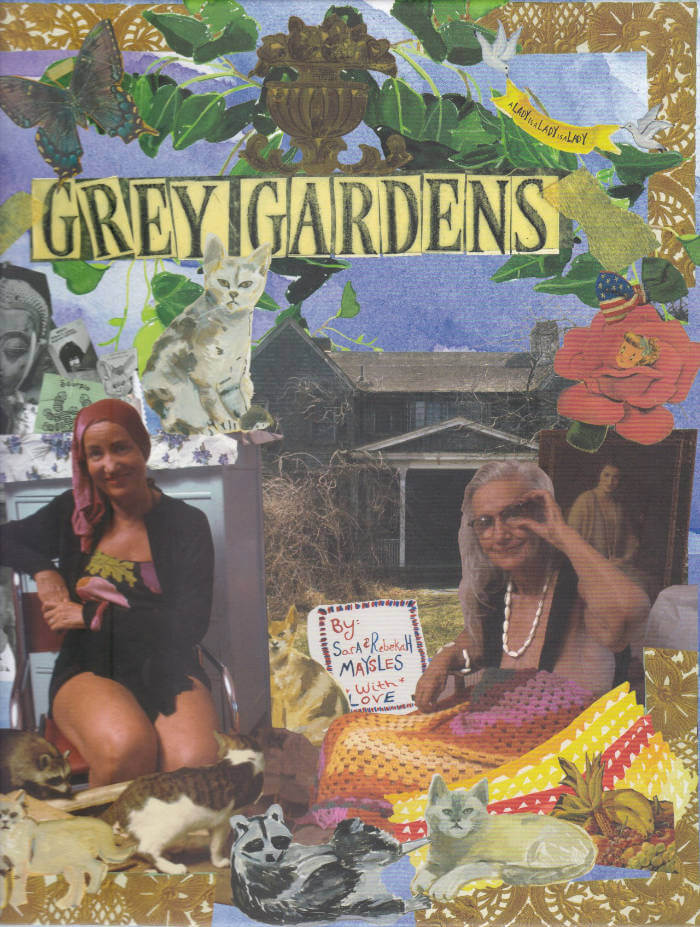
Grey Gardens
One of the strangest and subtlest films ever made, the Maysles Brothers' 1975 documentary Grey Gardens today boasts as devoted a following as Harold and Maude. Shot at Grey Gardens, the dilapidated East Hamptons mansion of Big Edie and Little Edie Beale, aunt and cousin to Jackie Onassis, this classic of cinema vérité tracks the Beales' eccentric and sequestered lives, which consist mostly of doing nothing, but with a mesmerizing zest and volubility.
This volume offers a myriad of illustrations, photographs, film stills, production notes and other archival materials alongside transcripts of the Beales' own stories and conversations edited from unreleased Grey Gardens sound recordings. Structured to mirror the Maysles' approach to the world of the Beales, it resembles the enchanting clutter of the mansion, a self-contained world littered with mementos and ephemera. It also reproduces unpublished photographs by both Albert and David Maysles. With an introduction by Albert Maysles, drawings and illustrations by Albert's daughter, Rebekah Maysles and an appendix with the full transcript of Grey Gardens, as well as an audio CD of sound recordings capturing the Beales at their best, this book is the essential companion to the film and a beautiful testimony to its legacy.
The 60-minute CD that comes with the book contains conversations with the Beales and their friends, songs and poetry recited by the two Edies and audio of the Beales during and after watching the film for the first time.
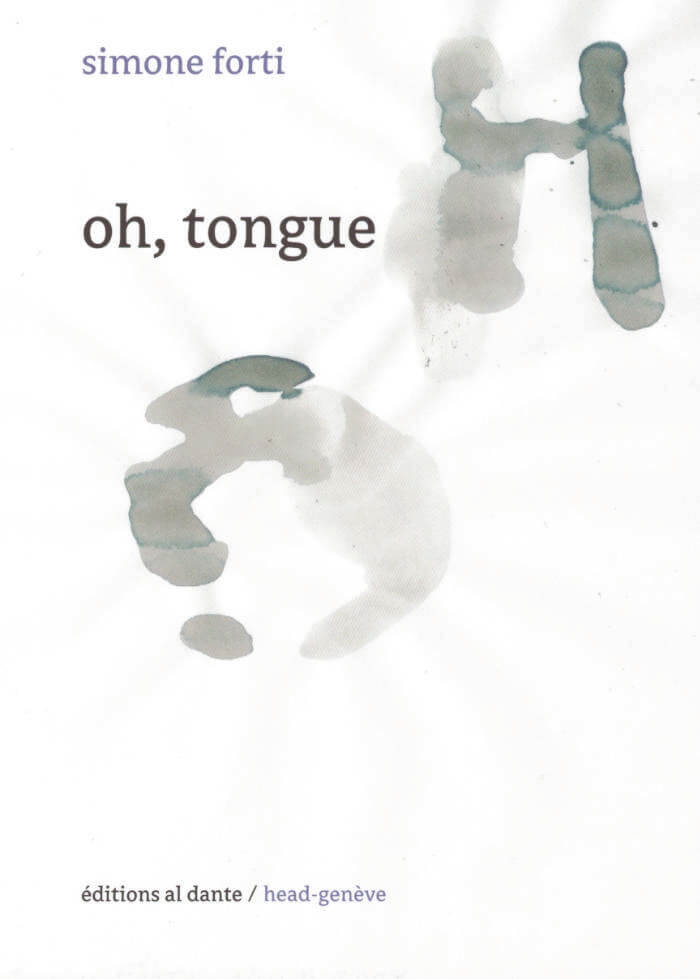
oh, tongue
The notebook of American dancer and choreographer Simone Forti, in which she shares her poetry as well as her thoughts on dance, the body, writing, the state of the world… The publication includes an interview with Forti by Annie Suquet, and an afterword by poet and Fluxus artist Jakson Mac Low.
American dancer and choreographer Simone Forti (born 1935 in Florence, Italy) has been a leading figure in the development of contemporary performance over more than fifty years. Artist, choreographer, dancer, writer, Forti has dedicated herself to the research of a kinesthetic awareness, always engaging with experimentation and improvisation. Investigating the relationship between object and body, through animal studies, news animations and land portraits, she reconfigured the concept of performance and dance.

Woman, Native, Other
Woman, Native, Other is located at the juncture of a number of different fields and disciplines, and it genuinely succeeds in pushing the boundaries of these disciplines further. It is one of the very few theoretical attempts to grapple with the writings of women of color. - Chandra Talpade Mohanty
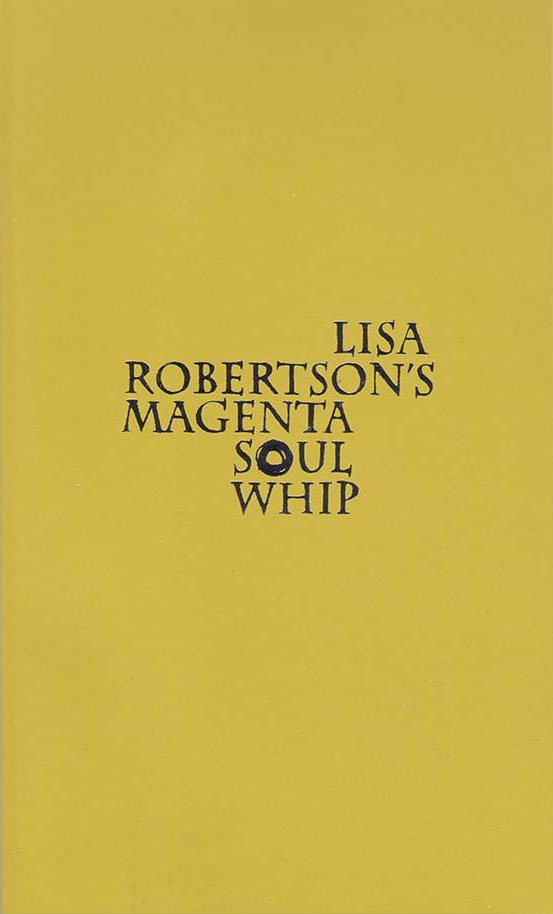
Magenta Soul Whip
Lisa Robertson writes poems that mine the past, its ideas, its personages, its syntax, to construct a lexicon of the future. Her poems both court and cuckold subjectivity by unmasking its fundament of sex and hesitancy, the coil of doubt in its certitude. Reading her laments and utopias, we realize that language, whiplike, casts ahead of itself a fortuitous form. The form brims here pleasurably with dogs, movie stars, broths, painting's detritus, Latin and pillage.
Erudite and startling, the poems in Lisa Robertson's Magenta Soul Whip, occasional works written over the past fifteen years, turn vestige into architecture, chagrin into resplendence. In them, we recognize our grand, saddened century.